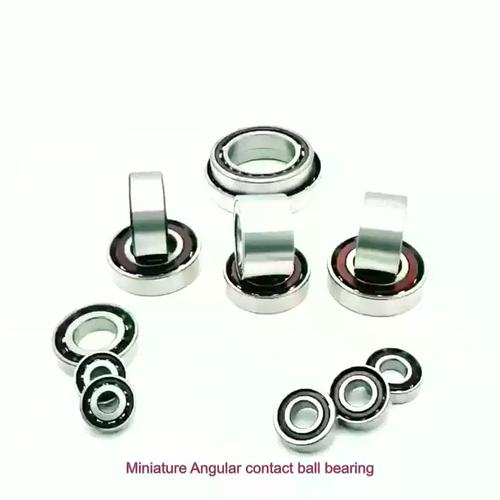Why Low Noise Bearings for Medical Devices Are Essential for Modern Healthcare
The Critical Role of Low Noise Bearings in Medical Device Innovation
Introduction
In the high-stakes world of medical technology, low noise bearings for medical devices have become indispensable components. These precision-engineered solutions ensure silent operation in MRI machines, surgical robots, and diagnostic equipment while maintaining exceptional accuracy. This article explores their technical advantages, diverse applications, and why selecting the right bearing directly impacts patient outcomes and regulatory compliance.
What Are Low Noise Bearings?
Low noise bearings for medical devices are specialized rotational components designed with advanced materials and manufacturing techniques to minimize acoustic emissions. Unlike standard bearings, they incorporate features like super-finished raceways, ceramic hybrid elements, and specialized lubricants that reduce vibration by up to 70% compared to conventional models.
Key Benefits in Healthcare Settings
 1. Enhanced Patient Comfort: Operate below 25 dB in neonatal incubators and sleep study equipment
1. Enhanced Patient Comfort: Operate below 25 dB in neonatal incubators and sleep study equipment
2. Improved Diagnostic Accuracy: Eliminate vibrational interference in imaging systems
3. Extended Equipment Lifespan: Reduce wear through optimized load distribution
4. Regulatory Compliance: Meet ISO 13485 and FDA noise level requirements
Medical Applications
• Surgical Robotics: Enable precise joint movements in da Vinci-type systems
• Portable Ultrasound: Allow quiet scanning in emergency environments
• Dental Handpieces: Achieve vibration-free drilling at 400,000 RPM
• Laboratory Automation: Ensure silent operation in 24/7 diagnostic equipment
Selection Criteria
When sourcing low noise bearings for medical devices, consider:
1. Load Capacity: Radial/axial load ratings for specific applications
2. Sterilization Compatibility: Steam autoclave vs. chemical resistance
3. Lubrication Type: Medical-grade greases vs. oil-free solutions
4. Certification: ISO Class 5 cleanroom manufacturing standards
Industry Trends
The global medical bearings market is projected to grow at 8.3% CAGR through 2030, driven by:
• Miniaturization of implantable devices
• Adoption of AI-assisted surgical systems
• Increasing demand for home healthcare equipment
Why Choose Our Solutions?
Our ISO-certified low noise bearings for medical devices feature:
• Customizable preload settings (20-200N)
• Optional conductive coatings for MRI compatibility
• Lifetime lubrication packages
• Traceability documentation for FDA audits
FAQs
Q: What noise level qualifies as 'low noise' in medical bearings?
A: Typically below 30 dB(A) at 1m distance under operational loads.
Q: How often should medical bearings be replaced?
A: Most premium models last 5-7 years with proper maintenance.
Q: Are your bearings compatible with gamma sterilization?
A: Yes, our X-series uses radiation-resistant polymer cages.
Conclusion
Selecting appropriate low noise bearings for medical devices directly impacts clinical outcomes and equipment ROI. Contact our engineering team today for customized solutions meeting your exact operational requirements.




 13869596835
13869596835